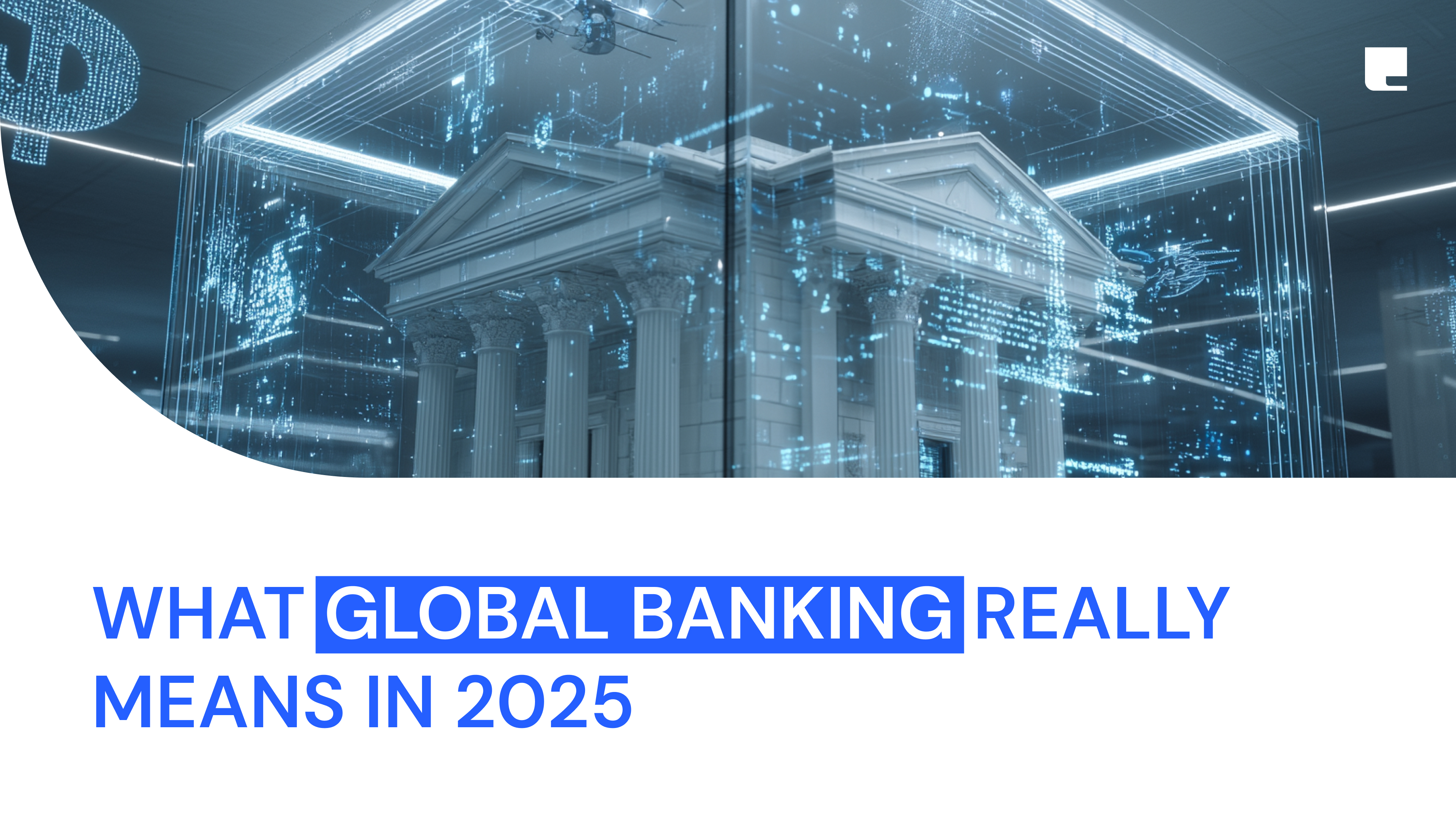Introduction: Global Banking Is Being Rewritten
The term “global banking” once meant relying on legacy institutions like HSBC or Citi to access international accounts, complete with lengthy onboarding, opaque FX fees, and slow transfers.
In 2025, global banking has been redefined.
Fintechs, blockchain infrastructure, and a new generation of digital-first businesses have transformed the landscape. Today, businesses can operate globally without ever walking into a bank. Whether you’re a startup in Jakarta or an SME in Dubai, you now have access to multicurrency banking, real-time payments, and FX transparency from your laptop.
1. The Rise of Digital-First Global Business Banking
Over 400 million businesses around the world operate with a cross-border component—whether through remote teams, global suppliers, or international customers.
Modern global banking platforms offer:
- Multicurrency accounts in USD, EUR, GBP, AED, SGD, and more
- Fast onboarding powered by AI-driven KYB processes
- Local and global payment rails from one dashboard
- Unified views of treasury, FX, and vendor operations
Platforms like Wise Business, Mercury, Airwallex, and Endl are leading this shift, offering businesses the flexibility to operate globally without physical branches or red tape.
2. FX and Cross-Border Payments: The Hidden Problem
Cross-border payments are still one of the most expensive and opaque parts of global banking.
In 2023 alone, SMEs lost over $800 million due to hidden FX fees and poor rate transparency. Even worse, many businesses weren’t aware they were overpaying.
In 2025, leading platforms provide:
- Real-time FX rate visibility
- Automated routing over the fastest, cheapest rails (ACH, SEPA, UPI, blockchain)
- Transparent breakdowns of spread, platform fees, and bank charges
These innovations drastically reduce cost and settlement time, offering a major advantage over traditional banking systems.
3. The Rise of Stablecoins in Business Banking
Stablecoins like USDC, EURC, and USDT have gone from fringe to functional.
By 2025:
- Over $150 billion in stablecoins circulate globally
- Businesses use them for global treasury, payments, and vendor settlement
- Settlement speeds are near-instant, and transaction fees are negligible compared to SWIFT or wires
With regulated providers in the US, EU, and Asia, stablecoins are now widely accepted and integrated with traditional compliance frameworks.
They’re not just a crypto tool — they’re a core part of modern global finance infrastructure.
4. The New Global Banking Infrastructure Stack
Global banking is no longer built on monolithic systems. It’s modular, API-based, and composable.
Here’s what powers it:
- Real-time FX APIs (instead of bank rate desks)
- Smart routing over blockchain and local rails
- AI-enhanced compliance automation (KYB/KYC, sanctions checks)
- API-native treasury dashboards and reconciliation tools
- Wallet-based multicurrency logic instead of siloed accounts
This shift empowers startups and SMEs to create their own banking workflows without relying on outdated software or brick-and-mortar branches.
5. Why This Matters for Businesses
For founders, CFOs, and operators, modern global banking solves real business pain:
- Eliminates delays and high fees from traditional wire payments
- Offers easy access to USD and EUR banking without needing foreign entities
- Reduces treasury complexity and manual finance operations
- Empowers real-time cash flow visibility across geographies
Most importantly, it enables companies to expand into new markets without needing to build entire local finance stacks.
6. Regulation and Compliance in 2025
As infrastructure evolves, so does regulation.
In 2025:
- The EU’s MiCA framework now governs stablecoins and crypto assets
- The UAE, Singapore, and Hong Kong have launched fintech licensing regimes
- The US is catching up with evolving federal guidance, though still fragmented
- Compliance-as-a-service tools automate identity checks and monitor sanctions in real time
For businesses, choosing platforms that embed regulatory compliance—rather than bolting it on—is now a competitive advantage.
7. The Future Is Modular, Borderless, and Instant
Global banking in 2025 doesn’t require offices in five countries. It requires a platform that gives you access to them.
- It’s 24/7, not 9–5
- It’s wallet-native, not branch-based
- It’s real-time, not batch-settled
The future of banking isn’t about more banks. It’s about better rails, smarter infrastructure, and complete transparency.
For any business operating across borders, that future has already arrived.
